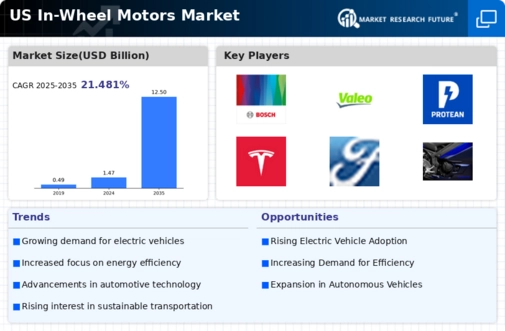US In-wheel Motors Market Summary
The United States In-Wheel Motors market is projected to experience substantial growth from 1.47 billion USD in 2024 to 12.5 billion USD by 2035.
Key Market Trends & Highlights
US In-Wheel Motors Key Trends and Highlights
- The market is expected to grow at a compound annual growth rate (CAGR) of 21.48 percent from 2025 to 2035.
- By 2035, the market valuation is anticipated to reach 12.5 billion USD, indicating a robust expansion.
- In 2024, the market is valued at 1.47 billion USD, reflecting the initial phase of significant growth.
- Growing adoption of electric vehicles due to increasing environmental concerns is a major market driver.
Market Size & Forecast
| 2024 Market Size | 1.47 (USD Billion) |
| 2035 Market Size | 12.5 (USD Billion) |
| CAGR (2025-2035) | 21.48% |
Major Players
Bosch, Valeo, Protean Electric, Aptiv, Tesla, Ford Motor Company, Nidec Corporation, Elaphe Propulsion Technologies, Yamaha Motor, Magna International, Continental AG, Mitsubishi Motors, General Motors, Hitachi Automotive Systems, Brembo






















Leave a Comment